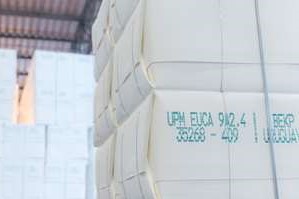 Pulp is primed for the big time
Pulp is primed for the big time
From sustainability issues to hygiene habits, market pulp is making advances across the board.The global market for pulp is positively buzzing. Engineering and consulting company AFRY expects considerable growth in the global demand for market pulp – BSKP, BHKP, UKP, fluff, mechanical pulp and dissolving pulps – during the next decade or so. Global demand was 78 million tonnes in 2020 and that is expected to reach 108 million tonnes by 2035.
“Most of the growth is expected to come from China – about 15 million tonnes – but the rest of Asia, Europe and North America, as well as other developing economies, are all growing their demand for market pulp,” says João Cordeiro, Head of global Pulp & Paper business, Process Industries Division at AFRY.
Tomi Amberla, Director at AFRY Management Consulting, points out that the growth in pulp demand is riding on global megatrends, such as sustainability, increasing disposable incomes and population growth.
“All these megatrends are very much in line with the pulp demand prospects.”
Hygiene trends changing globally
A big part of the growth is driven by the demand for hygiene and tissue products – for example, as the Asian middle class keeps growing, local families are adopting Western hygiene patterns and pushing consumption. According to Cordeiro, many people in Asia are now starting to use toilet papers, paper towels, napkins and facial tissues for the first time in their lives.
“If you look at Finland or the USA, one person uses about 20 kg of hygiene products per year.
In countries like China and, say, Brazil, that consumption is only 5–8 kg a year,” Cordeiro offers as comparison.
Nevertheless, the hygiene and tissue segment is growing in Western countries as well, since the industry is very active in launching new products and the population is ageing.
“Fluff pulp is needed for older consumers with issues of incontinence, for example,” says Cordeiro.
Drop in print media not significant
Cordeiro and Amberla see challenges too. For instance, the digitalization of media continues to impact pulp sales, but, as it turns out, the growth in other sectors such as hygiene and tissue and packaging has more than offset the drop.
“Now we have a solid foundation to launch new pulp mills,” Amberla says. Amberla talks about the new powerful trend in packaging where plastic is replaced by fibre-based materials.
“There are new fibre-based alternatives being developed for brand owners who want to improve their image by pursuing sustainable packaging,” he says.
Cordeiro gives an example: in American schools students’ lunch boxes are made of plastic – but now school boards want to make them fibre-based.
“Here’s where virgin fibre is really needed – whenever you have fibre that is in contact with food or needs to look polished, it must be fresh fibre,” he adds.
Boosting the bioeconomy
Cordeiro and Amberla are also of the opinion that pulp is at the centre of the so-called bioeconomy. “Pulp mills are turning into biorefineries with new solutions for pulp itself and the various side streams from production,” Cordeiro says.
Amberla views pulp production as “an anchor” for an entire ecosystem. While pulp operations
form the core, new startups can come in and work on their innovations involving e.g. lignin or nanocellulose.
“This way, with an entrepreneurial mindset, it’s possible to make sustainable textile fibres for the fashion industry, for instance.”
Next step for mills
Looking ahead, the AFRY experts are intrigued by the rise of closed water systems in pulp mills.
Cordeiro points out that it is possible to introduce very little fresh water from a local body of water to the process – and instead recycle the water already in the system repeatedly.
“These solutions are still in their infancy, but they are coming,” he concludes.
